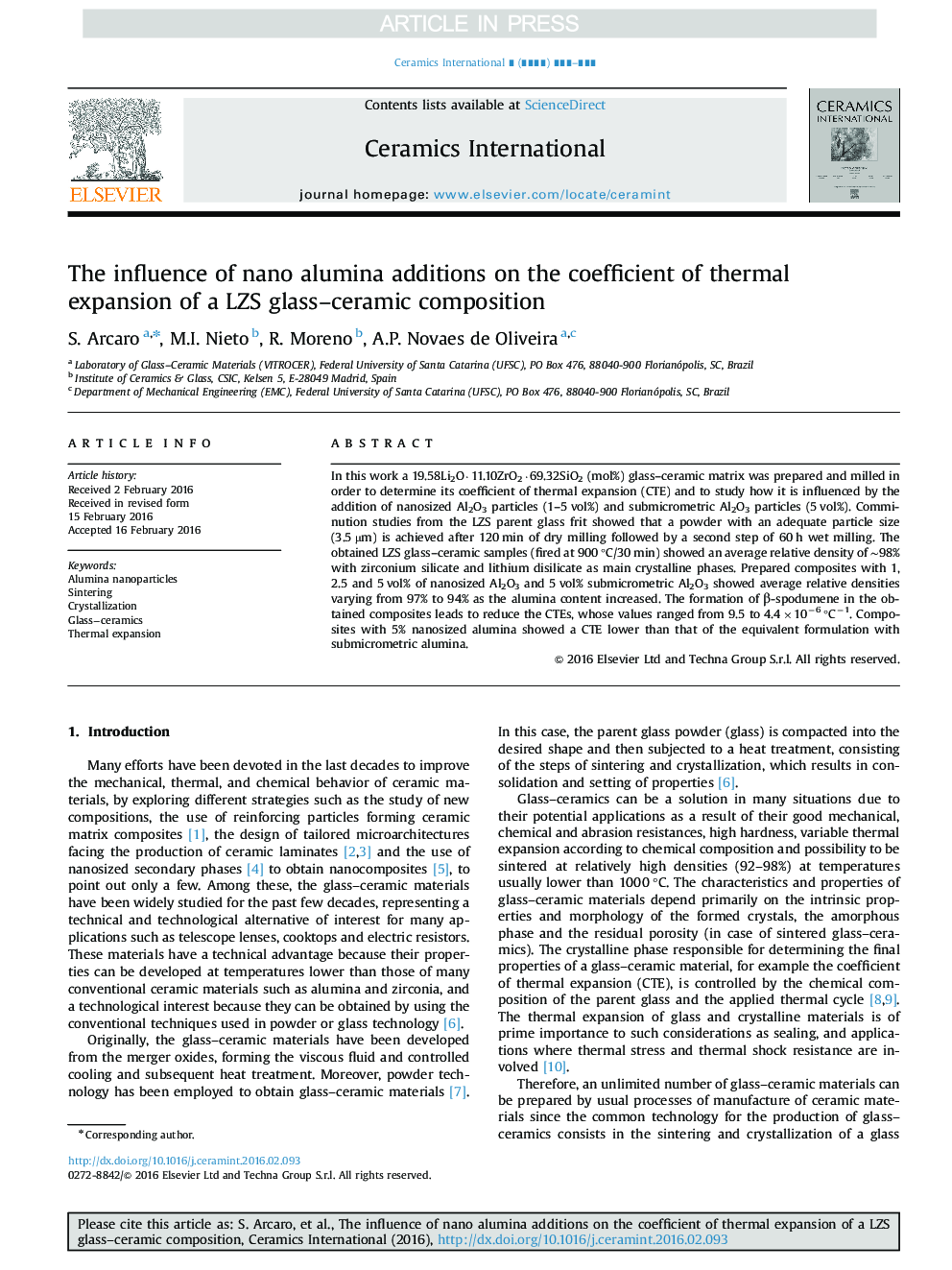| Article ID | Journal | Published Year | Pages | File Type |
|---|---|---|---|---|
| 10624219 | Ceramics International | 2016 | 7 Pages |
Abstract
In this work a 19.58Li2O·11.10ZrO2·69.32SiO2 (mol%) glass-ceramic matrix was prepared and milled in order to determine its coefficient of thermal expansion (CTE) and to study how it is influenced by the addition of nanosized Al2O3 particles (1-5 vol%) and submicrometric Al2O3 particles (5 vol%). Comminution studies from the LZS parent glass frit showed that a powder with an adequate particle size (3.5 µm) is achieved after 120 min of dry milling followed by a second step of 60 h wet milling. The obtained LZS glass-ceramic samples (fired at 900 °C/30 min) showed an average relative density of â¼98% with zirconium silicate and lithium disilicate as main crystalline phases. Prepared composites with 1, 2.5 and 5 vol% of nanosized Al2O3 and 5 vol% submicrometric Al2O3 showed average relative densities varying from 97% to 94% as the alumina content increased. The formation of β-spodumene in the obtained composites leads to reduce the CTEs, whose values ranged from 9.5 to 4.4Ã10â6 °Câ1. Composites with 5% nanosized alumina showed a CTE lower than that of the equivalent formulation with submicrometric alumina.
Related Topics
Physical Sciences and Engineering
Materials Science
Ceramics and Composites
Authors
S. Arcaro, M.I. Nieto, R. Moreno, A.P. Novaes de Oliveira,
